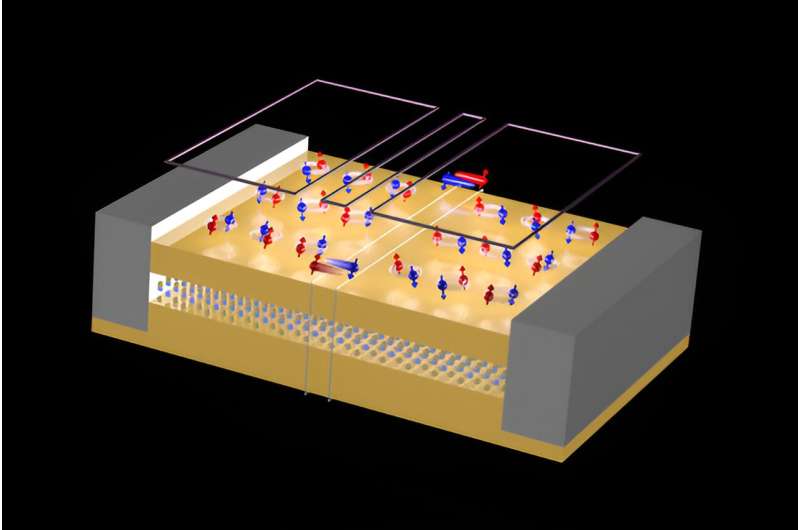This article has been reviewed according to Science X's editorial process and policies. Editors have highlighted the following attributes while ensuring the content's credibility:
fact-checked
peer-reviewed publication
trusted source
proofread
A superconducting junction made from a single 2D material promises to harness strange new physics

Physicists at RIKEN have developed an electronic device that hosts unusual states of matter, which could one day be useful for quantum computation.
When a material exists as an ultrathin layer—a mere one or a few atoms thick—it has totally different properties from thicker samples of the same material. That's because confining electrons to a 2D plane gives rise to exotic states. Because of their flat dimensions and their broad compatibility with existing semiconductor technologies, such 2D materials are promising for harnessing new phenomenon in electronic devices.
These states include quantum spin Hall insulators, which conduct electricity along their edges but are electrically insulating in their interiors. Such systems when coupled with superconductivity have been proposed as a route toward engineering topological superconducting states that have potential application in future topological quantum computers.
Now, Michael Randle at the RIKEN Advanced Device Laboratory, along with co-workers from RIKEN and Fujitsu, have created a 2D Josephson junction with active components entirely from a material known to be a quantum spin Hall insulator. The work is published in the journal Advanced Materials.
A Josephson junction is generally made by sandwiching a material between two elemental superconductors. In contrast, Randle and team fabricated their device from a single crystal of monolayer 2D tungsten telluride, which had previously been shown to exhibit both a superconducting state and a quantum spin Hall insulator one.
"We fabricated the junction entirely from monolayer tungsten telluride," says Randle. "We did this by exploiting its ability to be tuned into and out of the superconducting state using electrostatic gating."
The team used thin layers of palladium to connect to the sides of a tungsten telluride layer surrounded and protected by boron nitride. They were able to observe an interference pattern when they measured the sample's magnetic response, which is characteristic of a Josephson junction with 2D superconducting leads.
While this study provides a framework for understanding complex superconductivity in 2D systems, further work is required to clearly identify the more exotic physics the systems promise. The challenge is that tungsten telluride is difficult to process into devices due to the rapid oxidization within minutes of its surface under ambient conditions, which requires all fabrication to be performed in an inert environment.
"The next step involves the implementation of ultraflat pre-patterned gate structures by using, for example, chemical–mechanical polishing," explains Randle. "If this is achieved, we hope to form Josephson junctions with precisely tailored geometries and to use our cutting-edge microwave resonator experiment techniques to observe and investigate the exciting topological nature of the devices."
More information: Michael D. Randle et al, Gate‐Defined Josephson Weak‐Links in Monolayer WTe2, Advanced Materials (2023). DOI: 10.1002/adma.202301683
Journal information: Advanced Materials
Provided by RIKEN




















